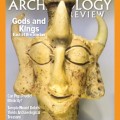Endnote 8 - Laodicea’s “Lukewarm” Legacy: Conflicts of Prosperity in an Ancient Christian City
The Sibylline Oracle (supposedly written by the Sibyl at Cumae during the first century B.C.E.—but heavily interpolated by Jews, Christians and others)—offers this observation: “Stalwart Laodicea, a quake will one day topple and level you, but you will stand rebuilt as a city” (4.107). Another of the oracles is more provocative: “But when a destructive man comes from Italy, then Laodicea, dashed down headlong, beautiful town of the Carians by the wonderful waters of Lycus, you will be silent, bemoaning a conceited parent” (3.470).


